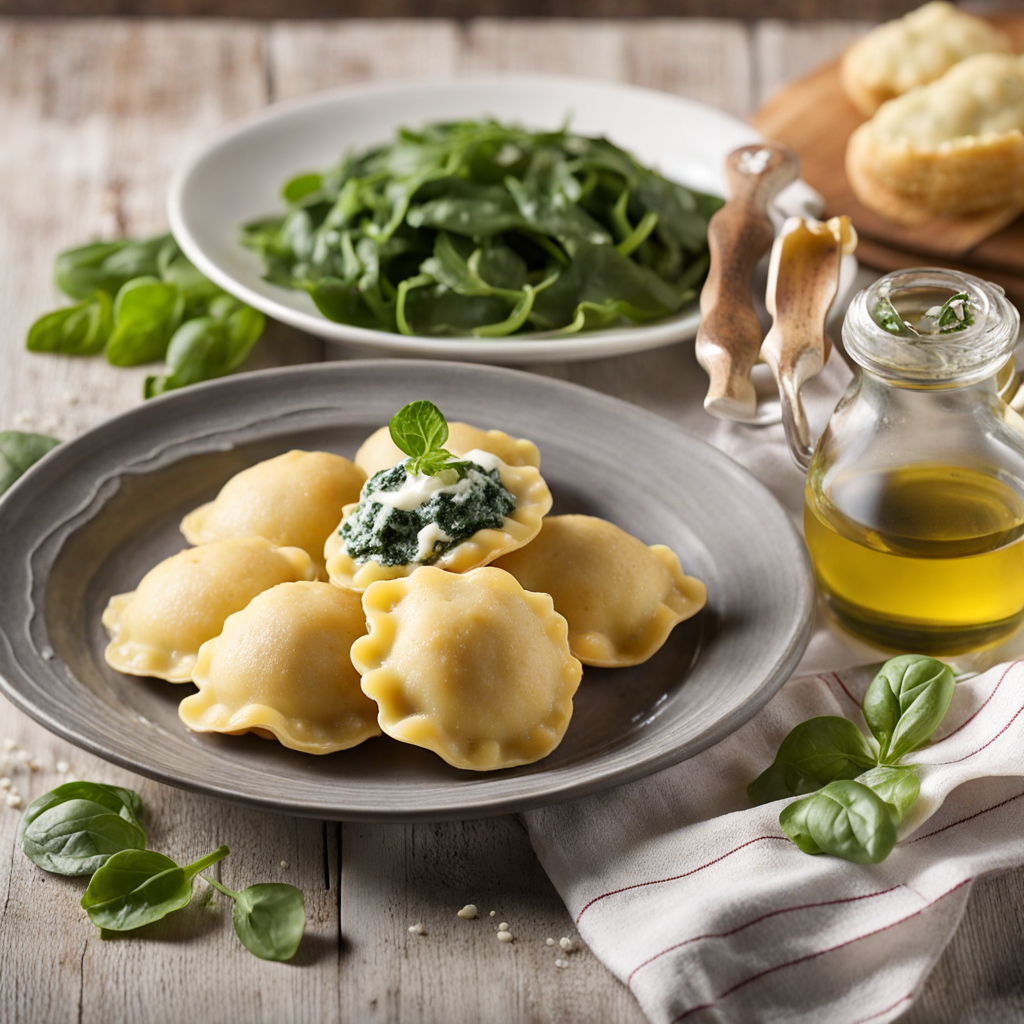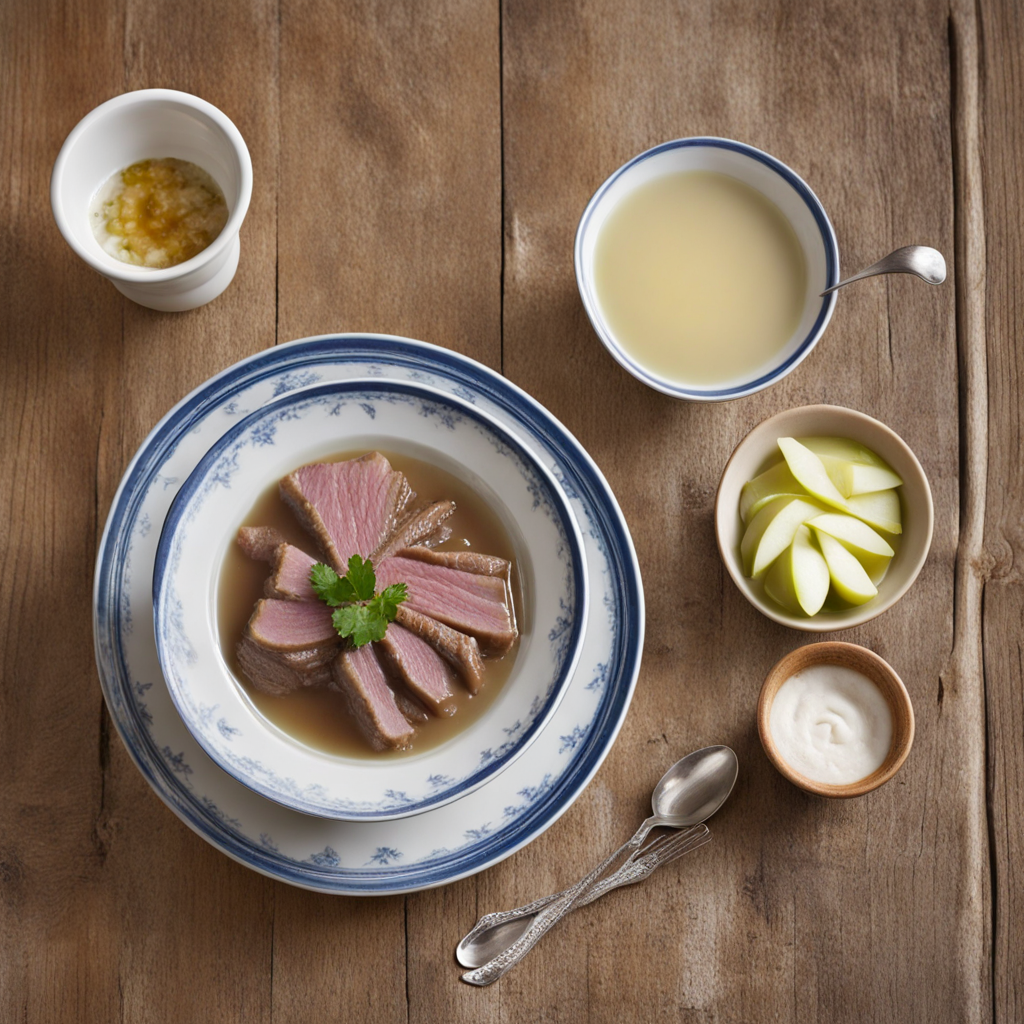Weinbeisser
Weinbeisser, a traditional Austrian dish, is a type of sausage that exemplifies the rich culinary heritage of the region. The name "Weinbeisser" translates to "wine biter," reflecting the dish's historical association with wine, particularly in the contexts of wine-producing areas like the Wachau Valley. This sausage has roots dating back to the 19th century, when it was commonly served during local festivities and gatherings, often enjoyed alongside a glass of wine. The dish is emblematic of Austria's vibrant food culture, marrying the simplicity of rustic ingredients with the sophistication of wine pairings. The flavor profile of Weinbeisser is distinct and robust. Typically, these sausages are made from a blend of finely minced pork and beef, seasoned with a medley of spices that may include garlic, nutmeg, and white pepper. The inclusion of wine in the mixture not only enhances the flavor but also contributes to the sausage's moisture, creating a succulent bite. When cooked, Weinbeisser develops a slightly crispy exterior while remaining juicy on the inside, offering a delightful contrast in textures. The subtle acidity from the wine balances the richness of the meat, making it a savory delight that pairs beautifully with mustard or sauerkraut. Preparation of Weinbeisser is both an art and a tradition. The process begins with selecting high-quality cuts of meat, which are then finely minced and mixed with the chosen spices and wine. This mixture is typically stuffed into natural casings, which can be
How It Became This Dish
Weinbeisser: A Culinary Journey Through Austrian Tradition #### Origins Weinbeisser, a traditional Austrian dish, is often described as a rustic, hearty food that reflects the agricultural and cultural landscape of Austria. The name "Weinbeisser" translates to "wine biter," which hints at its dual role as both a food item and a companion to wine. The origins of Weinbeisser can be traced back to the rural communities of Austria, where it was a staple in the homes of farmers and laborers. This dish is essentially a type of sausage, typically made from pork, which is seasoned with a blend of spices that may include garlic, pepper, and a hint of nutmeg. The sausages are usually smoked, giving them a distinctive flavor that complements the rich, full-bodied wines produced in various regions of Austria, particularly in the vineyards of Lower Austria and Styria. Traditional methods of preparation were often passed down through generations, with each family adding its unique flair to the recipe. The art of sausage-making was a practical necessity for rural communities, who sought to preserve the meat through smoking and curing, ensuring that it could last through the harsh winters. #### Cultural Significance Weinbeisser holds a special place in Austrian culture. It is more than just a dish; it represents a way of life that values community, tradition, and the bounties of the land. In many Austrian households, meals are a communal affair, and Weinbeisser is often served during gatherings, celebrations, and festivals, accompanied by freshly baked bread, pickles, and, of course, a glass of local wine. The sausage has also found its way into various regional festivals, where it is celebrated as part of the culinary heritage of Austria. Events such as the "Wurstmarkt" (sausage market) showcase local delicacies, with Weinbeisser taking center stage. These festivals not only promote local agriculture and craftsmanship but also reinforce the connection between food and community. In a society that has increasingly turned towards fast food, Weinbeisser serves as a reminder of the importance of traditional cooking methods, sustainable agriculture, and the enjoyment of food in a social context. The dish embodies the Austrian ethos of Gemütlichkeit, a term that connotes coziness and a sense of belonging, making it a beloved food for many. #### Development Over Time As Austria has evolved over the centuries, so too has Weinbeisser. Initially, it was a food primarily consumed by the working class, but it gradually gained popularity across different social strata. By the late 19th and early 20th centuries, as urbanization increased and the working class migrated to cities, traditional foods like Weinbeisser found their way into urban cuisine. With the rise of the Viennese coffee house culture, which began to flourish in the late 18th century, Weinbeisser and similar sausages became popular snacks served alongside coffee and wine. This marked a significant shift in how the dish was perceived; it transitioned from a staple of rural life to an urban delicacy enjoyed in social settings. In the 20th century, particularly after World War II, Austria experienced significant changes in its food culture, influenced by global culinary trends. The advent of convenience foods and industrial food production altered the landscape of traditional cooking. However, despite these changes, many Austrians remained committed to their culinary heritage, and the artisanal production of Weinbeisser saw a resurgence. Artisanal producers began to emphasize quality over quantity, sourcing local ingredients and employing traditional methods of preparation. This revival was part of a broader movement towards sustainable and locally sourced food, driven by a growing awareness of health and environmental issues. In contemporary Austria, Weinbeisser can be found on the menus of both traditional Heurigen (wine taverns) and modern bistros, often reimagined in innovative ways. Chefs experiment with different meat blends, spices, and accompaniments, creating fusion dishes that still honor the essence of the original sausage. This adaptability highlights the resilience of Austro-Hungarian culinary traditions, showcasing how they can evolve while remaining true to their roots. #### Weinbeisser in the Global Context In recent years, as globalization has brought diverse culinary influences to Austria, Weinbeisser has begun to make its mark beyond the borders of the country. Food enthusiasts and chefs from around the world are discovering the rich flavors of Austrian cuisine. Weinbeisser is increasingly featured in food festivals and international menus, where it is often highlighted as an example of traditional European sausage-making. The dish's pairing with wines has also become a focal point for wine tourism in Austria, with many vineyards offering tastings that include Weinbeisser. As people become more interested in the stories behind their food, the narrative of Weinbeisser as a product of local agriculture, craftsmanship, and tradition resonates on a global scale. #### Conclusion Weinbeisser is more than just a sausage; it is a symbol of Austrian heritage, community, and the enduring connection between food and culture. Its journey from the rural kitchens of Austria to the urban centers and international culinary scene illustrates the resilience of traditional foods in the face of modernization. As we continue to explore and celebrate culinary traditions, Weinbeisser remains a testament to the power of food to bring people together, evoke nostalgia, and foster appreciation for the land and its bounty. It stands as a delicious reminder of the stories we tell through our meals, the history we savor with each bite, and the importance of preserving culinary heritage for future generations.
You may like
Discover local flavors from Austria







